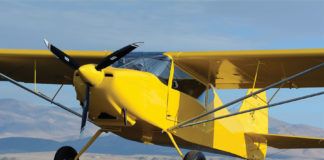I confess to cynicism. When the FAA published the final report from the working group looking at “major portion” guidance (for more, see “Back to the Future,” Page 40), another proposal was floated to help manage “excessive” use of commercial assistance. That proposal centered on the Primary Category.
My first thought: Not a chance. I figured propping up the Primary Category was a misdirection, a way to get the FAA to fire on an expendable target while the real valuables were being protected. No way would the FAA agree to quasi-certify near-the-edge Experimentals-by that I mean the big-dollar kits, one of whom is widely considered to be the catalyst for the FAAs new inquiries-while Cessna and Piper pulled on their GAMA hard hats and took jackhammer to hand simply to protect their own markets.
Then I calmed down and looked more closely at the category. The EAA and AOPA jointly proposed the category in 1984 because production aircraft were on the ropes and kitbuilts were hot. The Primary Category, much like what we have in Light Sport, reset certification and production approval standards in recognition of the fact that a simple, four-place airplane need not be certified to the same standard as transport aircraft.
And so those are the limits: maximum weight of 2700 pounds, piston engine, no turbos or supercharging, a maximum landing-configuration stall of 61 knots, the same limit imposed on CAR3 and FAR Part 23 single-engine aircraft. By the time the rule was finally implemented in 1993-nearly a decade after the initial proposal-the industry was beginning to rebound, and interest in alternative certification means was waning. The number of homebuilts continued to grow, and the few companies with the wherewithal to pursue certification realized there wasn’t market there to justify the costs.
But how about today? Could, as the Aviation Rulemaking Committee suggests, Primary Category be the bridge between super-fast-build Experimentals and the turnkey (but noncertified) aircraft the market seems to demand? Is the so-far positive experience with LSA enough to make it viable?
Dick VanGrunsven believes so. “I think there’s a lot of merit here,” he says. “We would definitely look at the category.” According to the Vans Aircraft founder, the certification process could be simplified to follow the ASTM-formed process that underpins Light Sport aircraft. “It would cost us money to prove our aircraft met the rules,” VanGrunsven says. “But we think we would make it back. We could develop new kinds of quickbuild kits. With Primary, the whole major portion goes out the window. We could even produce airplanes ourselves.” The RV-10 seems to fit the category to a T: Its right at the maximum weight, can make the stall speed requirement, and uses a normally aspirated engine. But there are many worthy designs that clear the limbo pole with headroom to spare; and they make up the bulk of the volume in our world.
Primary Category could improve quickbuild components for builders-at a cost, of course-and reduce completion times. But it doesn’t work on the main problem today: The high-end airplanes, turbines mostly, that are at the center of the controversy. These are complicated airplanes, not well suited to being built far from the mother ship. The assistance programs associated with them have created, in my view, our current scrutiny. They would be ideal candidates for certification and builder-assisted production, lets just not call them amateur-built anymore.
Not going to happen. You can see the FAA eyeing Primary Category and being convinced of an equivalent level of safety under relaxed certification for a 150-knot, simple, fixed-gear single but never for a Flight-Level-pushing, pressurized turboprop. Nope, the stakes are too high.
My concern is that the FAA would close down our rights as builders by clamping down hard on commercial assistance for everyone, and in doing so strangle the market. It could argue that the Primary Category is there as an outlet. But building by traditional Experimental/Amateur-Built means or through the Primary Category needs to be exactly that: an “or” proposition, not an “either.”




